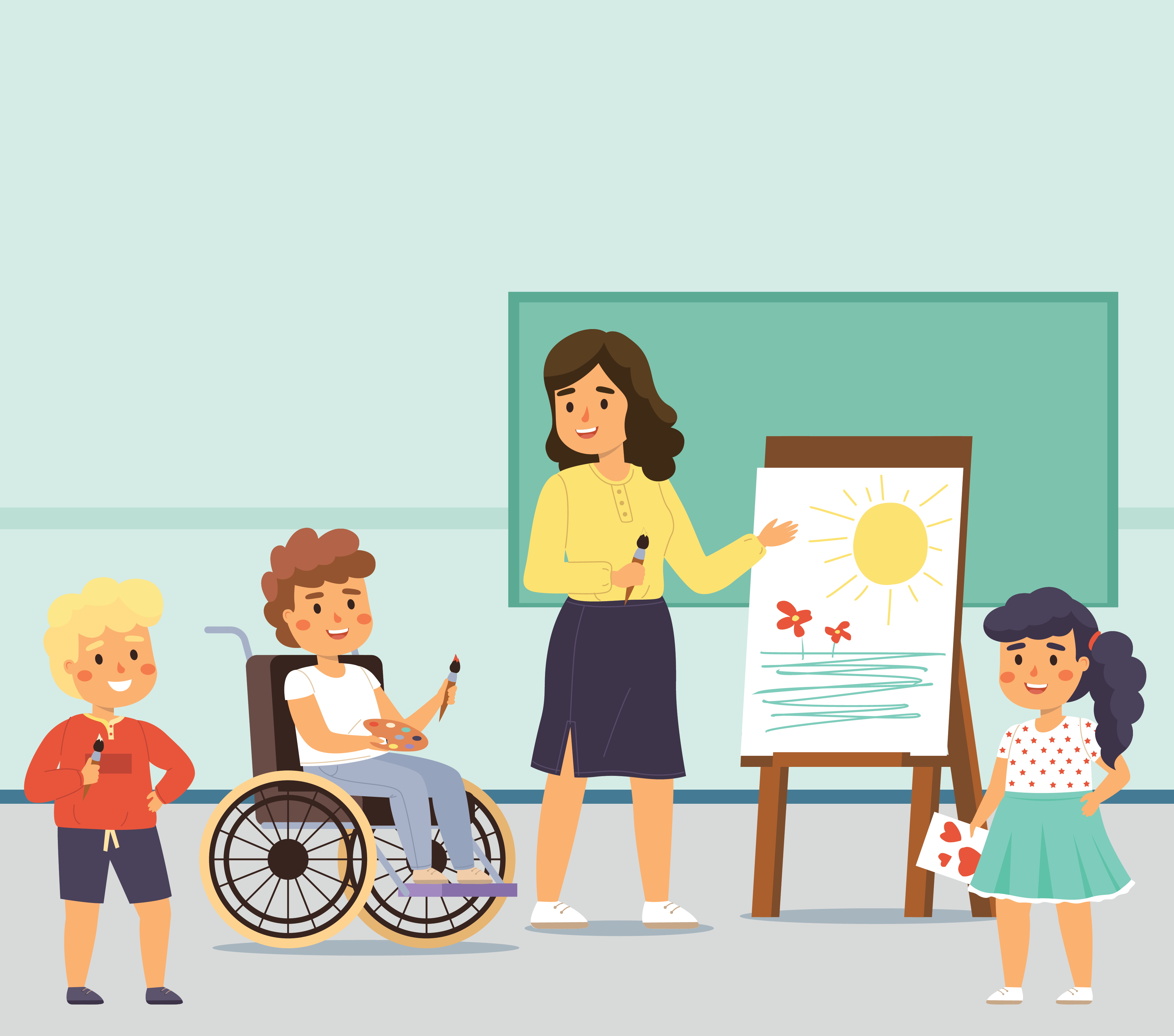
Capacity of Partners
Creating SBC expertise within government, CSOs and academic institutions
Introduction
Impactful, cost-effective and sustainable SBC programmes are often led by those closest to the communities being served and supported by regional and national leadership and policy-makers. It is critical that UNICEF support efforts to build capacity among civil society organizations (CSOs), governments and academic institutions. Staff, faculty and students have the potential to become key SBC practitioners both now and in the future.
Historically, capacity-building efforts for each of these institutions have focused on technical capacity in education, health and other programmatic areas. In order to achieve results at scale, it is important that UNICEF, stakeholders and partners build their capacity around planning, implementation and ensuring ownership of SBC efforts. This entails building a shared language around what SBC is and defining a toolkit of SBC approaches. With sustained capacity-building initiatives, we can create an enabling environment where SBC is understood, appreciated and owned by national and community-level leadership.
Benefits of SBC capacity-building
When CSOs and governments have the drive and capacity to support existing programmes with strong SBC efforts, it results in:
- Higher-quality research on the social and behavioural determinants of health and well-being to support UNICEF’s vision to realize the rights of all children
- A policy environment that supports collaboration between key government stakeholders, UNICEF and others to implement SBC programmes that complement service delivery initiatives
- Increased advocacy for SBC programming and resources at the country and regional level by UNICEF and other stakeholders
- Effective, sustainable and evidence-based SBC programmes in which research and evaluation is planned for and included from the beginning of projects
- Accelerated progress towards behavioural and programmatic objectives
- Improved capacity to scale up implementation of initiatives that build demand for services, support sustained community engagement and participation and amplify local voices across a range of behaviours
Implementation steps and checklist
- Work with partners to develop a shared vision for success and an understanding of current capacity, interests and needs. Capacity assessments can be conducted through site visits, surveys, interviews and reviews of existing materials. Questions to consider include:
- To what extent does the partner already implement SBC efforts? If SBC programmes are currently being implemented, what are the goals?
- Which SBC approaches and tools does the partner currently use? What has been the most/least successful? What additional skills or tools might they need to more effectively implement each approach?
- What types of research is the partner already doing? To what extent does the existing researchit measure social and behavioural outcomes? What types of qualitative and quantitative research tools are being used?
- What outcomes is the partner trying to achieve? Can effective SBC programming accelerate progress towards these outcomes? Are there specific SBC tools or approaches that can help achieve these outcomes?
- Who in the organization is responsible for work related to SBC? Does the institution/partner have dedicated staff or personnel working on SBC or SBC-related projects? What level of awareness and understanding do staff have about SBC? Do they have access to internal or external expertise?
- Work with partners to co-design capacity building efforts informed by the needs, desired outcomes and constraints of the partner. A variety of approaches can be used to build capacity, such as workshops or one-off trainings. Sustained capacity-building efforts include:
- Online learning sessions and modules (through Agora, for example)
- Ongoing academic modules situated within existing courses at universities or other institutions
- Participatory learning opportunities including shadowing, fellowships and joint research or design activities
- SBC modules integrated within government training programmes for key service providers (social service workers, health workers, teachers, etc.)
- Systems-strengthening activities such as the establishment of teams, processes and structures to sustain, integrate and access SBC expertise
- Work with partners to co-design an evaluation plan for capacity-building activities. This plan should track completed activities and any associated practices and outcomes (e.g., more targeted research, more cost-effective programme implementation, accelerated progress towards behavioural objectives, etc.)
- Work with partners to implement and monitor the capacity-building plan. With any SBC programme, progress should be continuously monitored. Continue to iterate upon capacity-building activities in order to tailor them to the partner’s needs and objectives.
- Assess outcomes of capacity-building efforts using the evaluation plan developed during inception. Evaluation should take place 1-2 years after the start of the programme. Revise, expand and/or scale up capacity-building efforts based on evaluation results.
Measurement
Capacity-building efforts should be measured before, during and after activities. Before implementation, work with partners to conduct a capacity/needs assessment (as described above). Capacity-building activities should be continuously monitored. Following the completion of activities, an evaluation of the process and the associated impact should occur.
Research methodologies may include:
- Capacity/needs assessment: surveys, interviews, document or programmatic material reviews, site visits
- Process evaluation: databases to capture activity completion and participation, pre-post surveys, interviews
- Impact evaluation: structured questionnaires, analysis of service statistics, review of external evaluations of programmes
Measurement of outcomes may vary across institutions and stages of capacity development. This table offers suggested outcomes for CSOs, governments, and academic institutions as each stage:
Stage | CSOs | Governments | Academic institutions |
Capacity/needs assessment | Existing SBC implementation capacity
Human resources to implement and monitor SBC programmes
| Capacity (including systems capacity) to support SBC programmes
Existing SBC advocacy
| Existing SBC research capacity
Course/programme offerings related to SBC
Previous dissemination of SBC research results
|
Programmatic objectives related to SBC (and progress towards those outcomes) | |||
Process evaluation | Number of staff trained in SBC research, implementation and/or advocacy
Number of internal SBC capacity-building or training efforts developed (to train replacements)
Number of new SBC initiatives developed or supported | Number of staff trained in SBC research, implementation and/or advocacy
Number of SBC champions/advocates identified within government
Number of new SBC initiatives developed or supported
Existence of supportive structures/mechanisms for SBC within government
Number of SBC research centres or centres of excellence established
| Number of faculty trained in SBC research and/or implementation
Number of SBC-related courses developed and offered within curricula
Number of students participating in SBC-related courses
Number of faculty undertaking SBC-related research
Number of students undertaking SBC-related research
Number of SBC research centres or centres of excellence established
|
Outcome evaluation | Number of capacity-building efforts completed and level of participation in each
Trainee satisfaction with capacity-building efforts
Perceived change in SBC knowledge (ability to lead or support SBC programmes)
Perceived change in attitudes towards SBC (willingness to participate in advocacy)
Number of SBC teams, policies and processes among partners and stakeholders involved in SBC-related programming | ||
Impact evaluation | Social and behavioural outcomes should be pre-defined by partners. Measure progress made towards achieving these outcomes following completion of capacity-building efforts | ||
Partnerships
It is important to note that some organizations may function as both participants and partners in capacity-building efforts.
Participants in capacity-building efforts may include:
- Civil society and community-based organizations
- Universities and other higher education institutions, including schools of education, public health, policy and communications
- Government partners including Ministries of Health, Education and Social Development at the national and sub-national levels
- Service organizations, such as Rotary Club
- Social service workforce systems
- Community-based organizations and networks
Partners who can provide support or a platform for capacity-building efforts may include:
- Universities and other higher education institutions
- Public and private research institutes
- Service organizations, such as Rotary Club
- Social service workforce systems
- Community-based organizations and networks
Case studies and examples
- GHANA: Using a collaborative approach to build SBC capacity
- NIGERIA: Institutionalizing state-led capacity strengthening for SBC
- MALAWI: Using a participatory approach to strengthen C4D capacity
- YEMEN: Building the C4D capacity of UNICEF partners
- TIMOR-LESTE: Providing technical support for designing a parenting programme
- BANGLADESH: Building university capacity to teach SBC courses
Key resources
Theory
- Eight Principles for Strengthening Public Sector Social and Behaviour Change Capacity
- The SBCC Capacity Ecosystem: A Model for SBCC Capacity Strengthening
- Evaluating capacity strengthening for social and behaviour change communication: A systematic review (Awantang, G.N., Helland, A., Velu, S., Gurman, T., 2021)
Application
- Training in Qualitative Research Methods: Building the capacity of PVO, NGO and MOH partners
- Communication for Development: An evaluation of UNICEF'S capacity and action, Ethiopia country case study evaluation report
Tools

Do - Capacity of Partners
Download this article as a PDF
You can download the entire page as a PDF here






